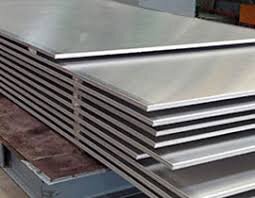In the oil and gas industry, choosing the right material is important in order to achieve the safety, efficiency and durability of the operation. Among the materials that have been tested to work well in this rigorous sector is Stainless Steel 316 plates. These plates are widely used because of their high corrosion resistance and mechanical properties in the industries. This blog post will focus on Stainless Steel 316 plate in oil and gas industries, its features and applications.
Understanding Stainless Steel 316
Stainless Steel 316 is an austenitic material with molybdenum content to improve its corrosion properties. This grade is especially useful against chlorides and other aggressive chemicals and therefore recommended for areas where there is likely to be exposure to chemicals that may cause corrosion. Including molybdenum also enhances its high-temperature strength and guarantees that it can handle high temperatures that are common in oil and gas industries.
Key Properties of Stainless Steel 316 Plates
Stainless Steel 316 plates offer several essential properties that make them suitable for oil and gas applications:
- Corrosion Resistance: Corrosion Resistance: The major benefit of Stainless Steel 316 plates is their excellent corrosion resistance, particularly in marine and chloride conditions. This characteristic is crucial in oil and gas applications, where harsh chemicals and offshore conditions frequently expose equipment and structures.
- High Strength and Durability: These plates possess high tensile strength and are capable of withstanding significant stress and impact, making them suitable for heavy-duty applications.
- Temperature Resistance: Stainless Steel 316 can withstand high temperatures without losing its mechanical properties. It is essential in oil and gas environments where equipment may be subjected to extreme heat.
- Ease of Fabrication: This alloy can be easily welded and fabricated into various shapes and sizes, allowing for versatile applications in complex designs.
Applications of Stainless Steel 316 Plates in Oil and Gas
Stainless Steel 316 plates are used in a wide range of applications within the oil and gas industry, including:
- Piping Systems
One of the most common uses of Stainless Steel 316 plate is in piping systems. These plates are often fabricated into pipes and fittings that transport oil, gas, and chemicals. Their corrosion resistance ensures that they maintain integrity over time, reducing the risk of leaks and failures in critical infrastructure.
- Storage Tanks
Storage tanks for crude oil and other chemicals often utilize Stainless Steel 316 plates. The material’s resistance to corrosion and chemical attack ensures the contents remain safe while extending the tank’s lifespan.
- Offshore Platforms
In offshore oil and gas extraction, equipment constantly faces saltwater and harsh environmental conditions. Stainless Steel 316 plate are used extensively in the construction of offshore platforms due to their durability and resistance to corrosion, helping to ensure the safety and reliability of these vital structures.
- Valves and Fittings
Valves and fittings are critical components in oil and gas operations, controlling the flow of fluids. Manufacturers commonly use Stainless Steel 316 plates to produce these components, ensuring durability and corrosion resistance, which are essential for maintaining operational integrity.
- Heat Exchangers
Heat exchangers are crucial in the oil and gas industry, facilitating heat transfer between different fluids. Stainless Steel 316 plate are used in the construction of heat exchangers due to their ability to withstand high temperatures and resist corrosion, ensuring efficient heat transfer and longevity of the equipment.
Benefits of Using Stainless Steel 316 Plates
The use of Stainless Steel 316 plates in oil and gas applications offers several significant benefits:
- Increased Safety
Corrosion-related failures can lead to leaks and catastrophic incidents in the oil and gas industry. By using Stainless Steel 316 plate, operators can enhance safety by reducing the risk of material failure and ensuring that systems function correctly under extreme conditions.
- Cost-Effectiveness
While Stainless Steel 316 plate may have a higher initial cost than other materials, their longevity and reduced maintenance needs lead to significant savings over time. Their durability means fewer replacements and less downtime for repairs, making them a cost-effective choice for oil and gas operations.
- Environmental Protection
Using corrosion-resistant materials like Stainless Steel 316 plates reduces the chances of spillage and leakage, thereby protecting the environment. This is especially so because the oil and gas industry is often subject to strict environmental laws and the consequences of an accident are disastrous.
- Versatility
Manufacturers use Stainless Steel 316 plates in many applications throughout the oil and gas industry. This versatility simplifies procurement, as the materials used in one project are the same as those used in another.
Stainless Steel 316 plates are indispensable in the oil and gas industry due to their exceptional properties and reliability in harsh environments. Their corrosion resistance, high strength, and versatility make them the material of choice for various applications, from piping systems to offshore platforms. By understanding the importance of these plates, operators can make informed decisions that enhance safety, efficiency, and sustainability in their operations.


